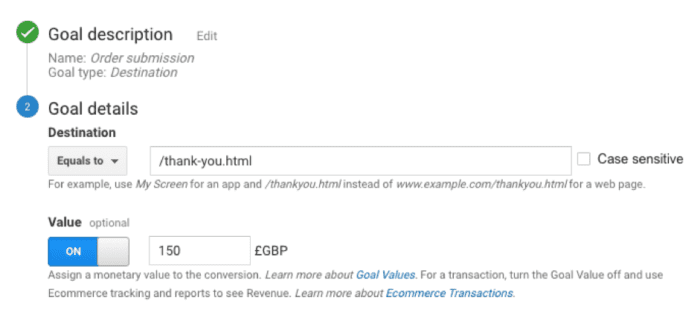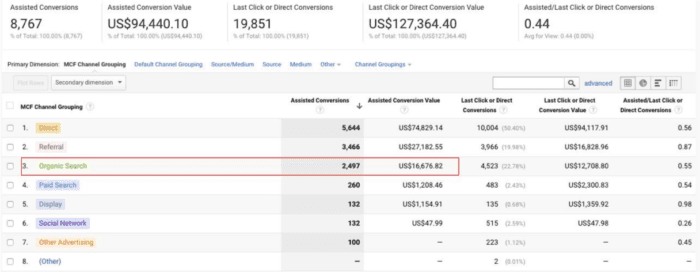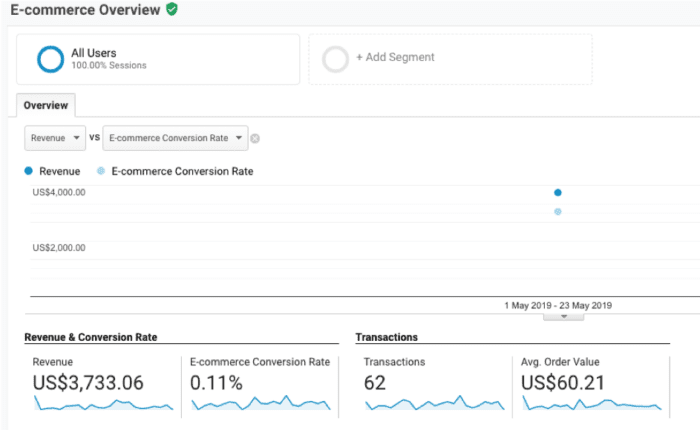Measuring the ROI of your SEO campaign is a crucial part of analyzing your digital marketing strategy, and is undoubtedly the most significant indicator of campaign value. But how do you measure it?
As marketers, we all obsess over results. To know we’ve achieved successful results, we use a range of KPI’s and coincidentally, we obsess over them, too. Website traffic, click-through rates, conversions, search engine rankings - they’re all important, but there’s only one king of the KPIs and that’s ROI.
This is because no other metric is truly able to assess whether the time and money invested in your marketing efforts have been worth the impact it’s had on your business. Essentially, we need to ensure nothing is going to waste.
Download our Individual Member Resource – SEO report template
This SEO report template created in PowerPoint gives you a simple structure to follow when conducting your own monthly review of a site's SEO performance.
Access the SEO report template
If ROI is positive, we know the campaign has been a success and thus can inform strategic decisions for future campaigns. If it’s negative, the campaign hasn’t been successful and obviously needs to be looked at before rolling out again.
There are several ways you can measure the ROI of an SEO campaign, but here’s the method we recommend using to yield the most accurate results.
Always track your conversions
Before you start to measure anything, you need to ensure you are properly set up to monitor your activities. In order to do this, you’ll need to action the following:
1. Set up conversion tracking
By setting up conversion tracking in Google Analytics, you are able to track the conversions that occur on your site at any given time. The type of conversion tracking you use will depend on the nature of your site, and whether or not it sells directly through E-commerce.
If you operate on E-commerce, tracking conversions this way will give you direct access to sales figures generated through online transactions; allowing you to calculate your total online revenue.
To set this up, simply follow the Google Analytics E-commerce tracking tutorial. When it’s fully set up, it’ll start pulling through data that will look something like this:
If your website is service-based, conversion goals can also be set up to track leads generated through such things as form submissions or submitted enquiries. The trick here is to assign a monetary value for each conversion (e.g £20), which will give you an idea of how much value is generated per conversion.
When deciding which values to attach to which conversions, pick something that is similar to your previous sales. For example, if your last three enquiries resulted in a £150 sale, make £150 your ‘end goal’ conversion value.
To set this up, go into your Google Analytics account, select ‘Admin’, then ‘Goals’, then ‘New goal’. When set up correctly, it should look like this:

In order to calculate the ROI, in this sense, you’ll need to:
2. Filter your SEO conversions
After you’ve been tracking your conversions for the first month, you should be left with enough data to start calculating the ROI generated from your SEO campaign.
You can access this via the ‘assisted conversions’ function on Google Analytics. To get here, click on Conversions > Multi-Channel Funnels > Assisted Conversions.
From here, you’ll be able to filter out the channels you don’t need (paid search, direct, email, referral, display), and identify the conversion stats that were generated solely through organic search. These will, of course, will be your SEO-driven conversions. It’ll look something like this:

By focussing on the organic search channel, you’ll be able to analyze your SEO performance and, in doing so, gain valuable insight into a critical part of your SEO and overall digital marketing strategy.
How to calculate your ROI
Now you’ve got your revenue figures for a selected time period (usually a specific month or quarter), you’re able to calculate your ROI based on how much you have invested into your SEO campaign during that time period.
There are various ways to successfully calculate your SEO ROI, but we recommend the following formula, as suggested by Investopedia:
(Current Value of Investment - Cost of Investment) / Cost of Investment = ROI
In this sense, the current value of investment would refer to the “proceeds obtained from the sale of the investment of interest” - in other words, the total organic search sales value.
Using the example above, if organic sales equated to $16,676.82 in one month and the business spent a total of $2,000 per month on SEO, the ROI for that month will be roughly 7%.
(16,676.82 - 2,000) / 1,000 = 7.34
Consider alternative metrics
Due to the nature of SEO, it’s not always easy pinpointing things such as sales revenue and growth. Fortunately for us marketers, there are things you can monitor to assess the performance of your SEO activity.
Consider looking at metrics such as:
Organic traffic
A good indicator that your SEO is working is the amount of organic traffic your website receives over time. In particular, traffic that is generated through non-branded keywords is the most telling in terms of SEO performance.
It’s also a good idea to track the number of new users visiting your site that are generated through organic traffic. An increase in new users shows that the visibility of your website has improved and it is no longer just attracting existing customers.
Search rankings
Increases in search engine rankings themselves are another good indicator that your SEO campaign is successful. Say, for example, you’re a London based web design agency and you’re aiming to boost your rankings for target keywords such as ‘website design London’ or ‘web design agency London’.
Before the campaign, you might only rank on the fourth or fifth page of Google, but if after three months, you’ve climbed up the rankings to page one, now that’s a sure sign that your activities are providing decent value for your business. You can monitor your search engine rankings through software such as SEMrush and Ahrefs.
Backlinks
Backlinks are the cornerstone of good SEO and are absolutely vital to securing top ranking positions. By earning backlinks (or inbound links) from credible and authoritative websites, Google will reward you with higher rankings, enabling you to gain greater search engine visibility.
In short, the more quality links you have, the more traffic you are likely to generate. Earning backlinks suggests your SEO is working, and monitoring them can really help to paint an overall picture of your campaign success.
Final thoughts
Whether you are paying an agency for SEO services or doing things all in-house, appraising the value of your SEO activity is an absolute must.
It’s important to firstly, understand what you need to measure and secondly, identify which metrics are the true indicators of success and failure. By setting your website up with the necessary tracking, you’ll be able to analyze your conversions and work out just how much value your SEO efforts are providing and most importantly, if it outweighs your investment.
Ross Ayling is a Digital Marketing Executive at Nottingham based digital marketing agency,
Champions Digital. As well as graduating with a First Class Honours Degree in Marketing from Nottingham Trent University, Ross has plenty of experience working for digital agencies; focussing mainly on SEO, content and digital strategy. After learning the best SEO practices in both an academic and vocational environment, Ross has developed into a budding SEO specialist who is eager to share his thoughts and opinions with the community. You can connect with him via
Linkedin.










